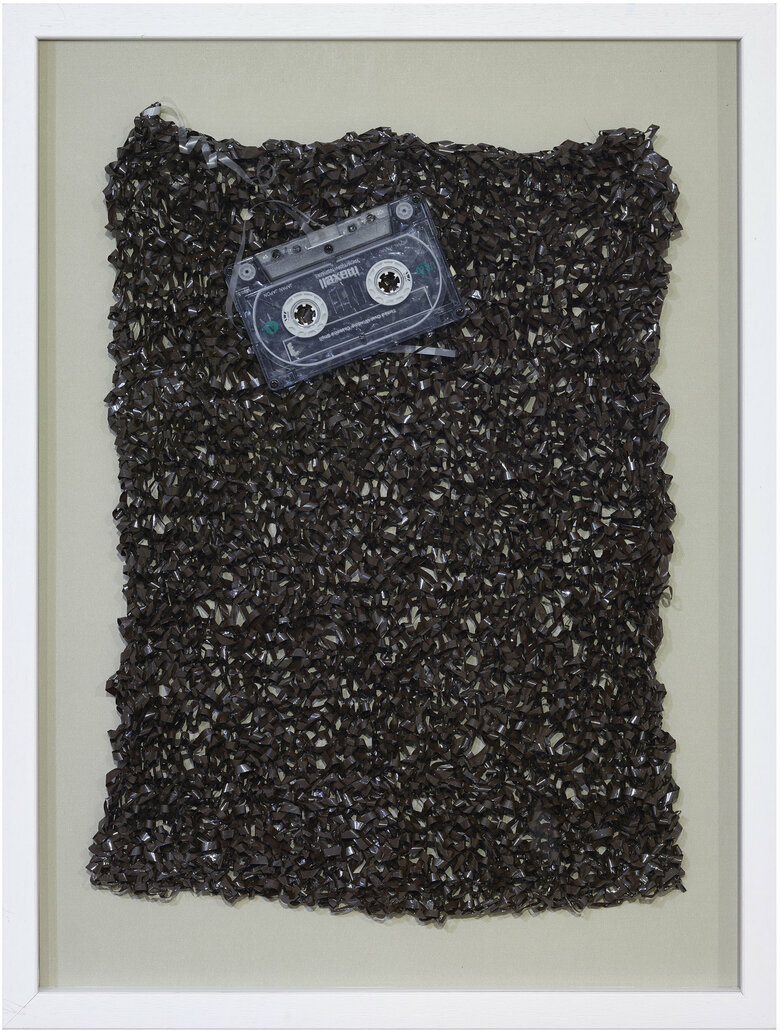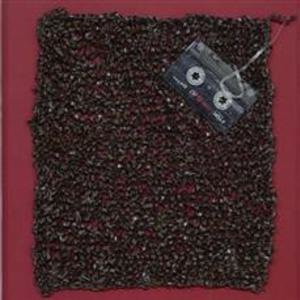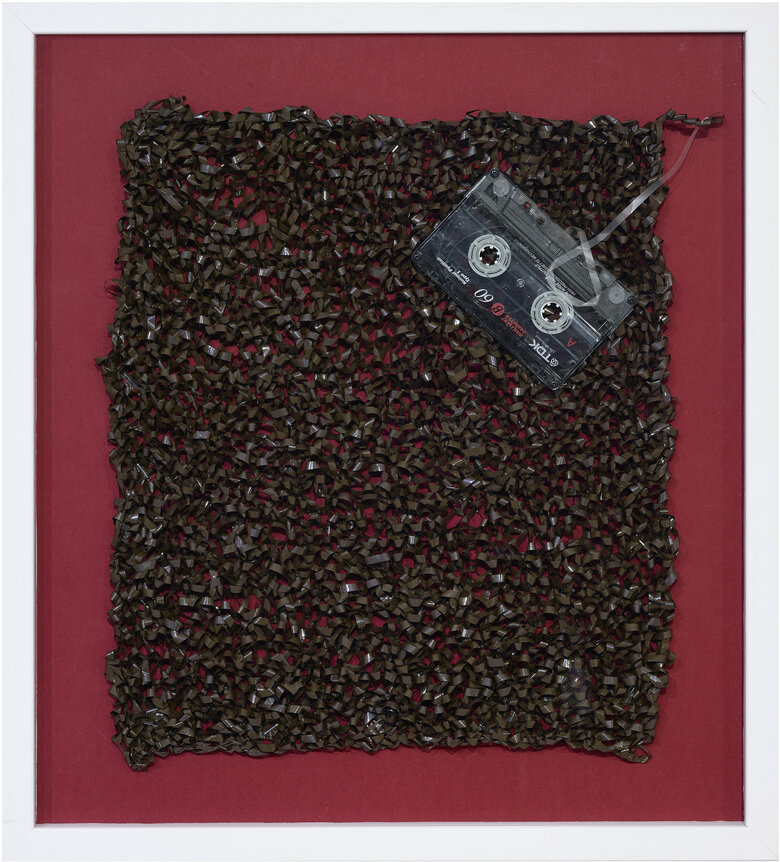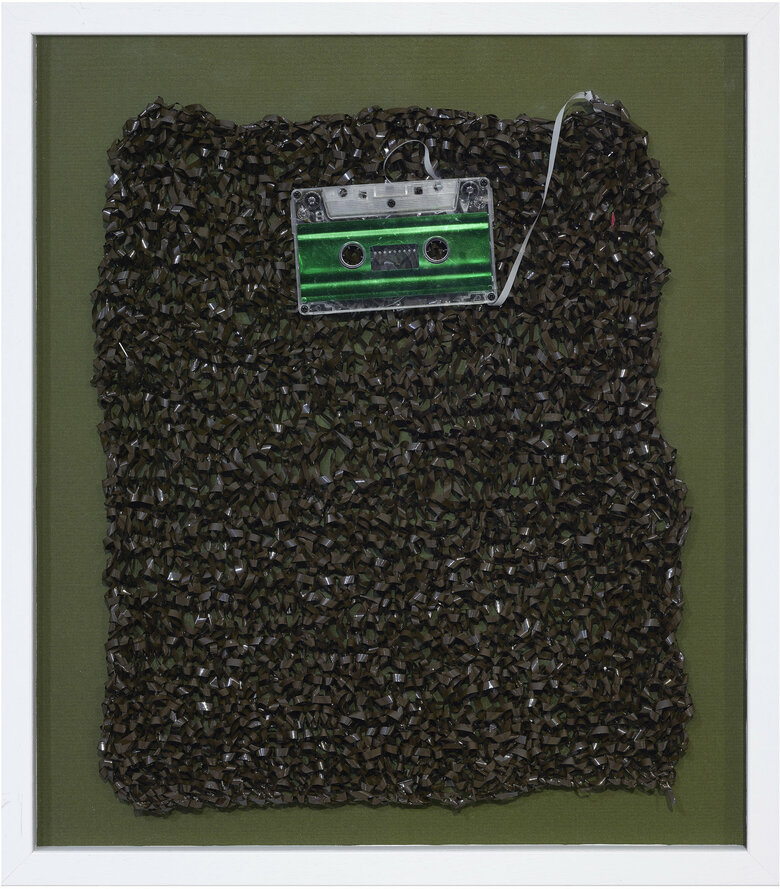Born in 1955, in Beirut, Lebanon, Greta Naufal Sawaya is an interdisciplinary artist and educator whose work encompasses drawing, painting, lithography, printmaking, installation, and video art....





Born in 1955, in Beirut, Lebanon, Greta Naufal Sawaya is an interdisciplinary artist and educator whose work encompasses drawing, painting, lithography, printmaking, installation, and video art....
Born in 1955, in Beirut, Lebanon, Greta Naufal Sawaya is an interdisciplinary artist and educator whose work encompasses drawing, painting, lithography, printmaking, installation, and video art. Naufal's artistic development was particularly influenced by her family and the tumultuous events of her time. Naufal is the daughter of the oud composer Georges Naufal Sawaya (1919-2014) and the head nurse Leila Lutfallah (1923-2006), who assisted the victims of the Civil War in Lebanon, from 1975 until 1990. Encouraged by the artistic environment in which she grew up, Naufal began her artistic journey as early as age twelve.
In 1967, Greta Naufal started taking art lessons with the painter Guider at the Académie Libanaise des Beaux-Arts (ALBA). The outbreak of the Lebanese Civil War in 1975 plunged her into the midst of conflict, leading her to getting shot in the right foot by a sniper at the Sodeco crossing in Beirut. In 1976, Naufal shifted her major from Chemistry to Fine Arts at the Lebanese University. In the same year, she found love and married Georges Khoury, a comics and animation artist, with whom she would have three children. In 1980, Naufal completed her Master's degree in Fine Arts on aesthetics and comics with distinction from the Lebanese University.
After acquiring a rich education rooted in the arts, Naufal embarked on a teaching career in 1982. She shared her passion for art with students at the Collège Protestant Français. In the same year, she hosted her first solo exhibition, Beyrouth ma ville, at the Goethe-Institute in Beirut, focusing on living in times of war. In 1985, Naufal traveled to Paris, where she enrolled at the Sorbonne University as a PhD candidate under the supervision of art critic and academic Marc Le Bot. In 1998, she was invited by the Swedish Institute to Stockholm. During her stay she met William Wareing, curator of the Millesgarden Museum in Stockholm, with whom she established a long-lasting collaboration. As a result, she held several exhibitions and led many workshops in Sweden. Naufal taught illustration at ALBA, and since 1984, she has been teaching Fine Arts at the Lebanese American University (LAU), formerly known as the Beirut University College (BUC). She is also a member of the artists' collective KKV in Stockholm, as well as the Association of Lebanese Artists.
Naufal’s journey through life and art is a remarkable tale of resilience, creativity, and a profound connection to her homeland, Lebanon. She witnessed the war firsthand, and used art to document daily life and the tension during wartime. She worked on topics such as displacement and collective memory. During the 1989-1990 Liberation War in Lebanon, Naufal and her family together with friends and neighbours lived confined, in an underground shelter. During this period, she captured her internal struggles and the efforts made by everyone to protect themselves from bombings. She created The Shelter: An homage to Pina Bausch, 1989, a mural-sized acrylic painting on paper inspired by the Café Müller dance choreographed by the renowned German dancer Pina Bausch. In this dance performance, bodies collapse, and actions and interactions are systematically repeated, expressing the idea of being trapped in an “existential tape loop”. The imagery from Café Müller resonated with Naufal's own experience of living in a shelter. Her painting portrays human interactions with space and everyday objects like chairs. The repetition of the same figure and the overlapping of lines succeed in translating movements in an indefinite space.
In the context of war, Naufal also worked on the theme of maternity, which she began to explore when her first child was born, in 1981. In 1987, Naufal hosted the exhibition Nine Months, which consists of six black and white, and one colored, pastel on paper drawings. The series was produced during the artist's third pregnancy at the Alumni Centre, American University of Beirut. The drawings either depicted a child alone or in close contact with a woman. The effect of movement created by the thick pastel lines and unfinished figures strongly conveys the relationship between the contradictory themes of war and maternity. The physical closeness, tenderness, and care of the mother-child relationship are juxtaposed with the violence and detachment brought about by the war, or in the words of the artist Samir Sayegh: "Maternity here is a personal experience, and war becomes a conversation where the language of motherhood takes over."
During the post-war period, Naufal worked with memories left by the war and the documentation of traces of civilisation. She experimented with the use of gauze, which she regarded as a "symbol of healing," evoking memories of her mother's compassionate work during the war. Furthermore, she explored the realms of personal and shared memories related to Beirut. Naufal documented Beirut's devastation through photographs and videos. She also depicted pottery shards found in archaeological excavations after the war. Additionally, she contributed to raising awareness of Lebanese architectural heritage by organising an exhibition in 1994, on the topic with her students at the College Protestant Francais. Her studies of the city culminated in the mixed-media series Beirut Blues, which was presented at Millesgården Museum in Sweden, in 1999.
Naufal’s art was also employed as a means to honor intellectuals who protested against political decisions made in the post-war period, and had met tragic ends. In 1995, she created a triptych in response to the suicide of Ralf Rizkallah, a psychologist and writer. In the early post-war years, the Lebanese state initiated reconstruction projects that many intellectuals believed were erasing war traumas and silencing Beirut's pre-war historical narratives. Therefore, Rizkallah's suicide, by jumping from Rawche Rock, one of Beirut's iconic coastal landmarks, was seen as a result of the postwar culture of erasure and structures of violence. Moreover, Naufal created two works in commemoration of two members of the anti-Syria movement. There individuals were both killed in a car explosion in 2005. Naufal created a video art piece and produced a series of photolithographic works based on footage from this video in memory of Samir Kassir, the chief editor of An-Nahar Newspaper. In memory of Gebran Tuéni, journalist and director of An-Nahar, Naufal illustrated the booklet Gebran and the Youth.
War and conflict were not the only themes recurrent in Naufal’s art. Coming from a home where musicians as Jimmy Hendrix and Louis Armstrong were played day and night, music became a motif in Naufal´s art. In her 2017 exhibition titled Partition Inachevée, Naufal honoured her father by showcasing a series of abstract collaged acrylic on canvas paintings. Within her artwork, the artist integrated elements such as music notes, cut-outs from magazines, screen-prints, and eucalyptus leaves. In the same year, she showcased an installation called Le fil de la vie, featuring ninety-two coiled cassette tapes surrounding a circular column, showcased at the Janine Rubeiz Gallery. The artworks are currently part of the Ramzi and Saeda Dalloul Art Foundation collection. The tapes, that were used in these art pieces, are a selection of her father's extensive collection, some containing bird songs, original compositions, or other archival materials from the late oud composer's repertoire. Additionally, Naufal creatively incorporated the coiled tapes into colorful paintings, effectively giving voice to her father's musical legacy through her artwork. These are examples of how music in her work became a form of language that connected the artist to her family and the people she met. A constant in her work is the depiction of movement, conveyed through visual or auditory elements, translating people's relationships with each other and their emotional states within the socio-political context in which they lived.
Moreover, Naufal is additionally well known for her portraits. She has produced self-portraits and depicted jazz musicians and writers in ink drawings, colorful Fauvist-like paintings, and prints on different types of paper, including music sheets and newspapers. Naufal's sketches may appear deceptively simple. However, with just a few lines, she manages to convey facial expressions that translate the effort of the musician playing and the vitality of music. The self-portraits are more figurative. Through lines and colors, Naufal reflects a deep study of her body, particularly the neck and face. The many events she organised or participated in within the music and dance field demonstrate that Naufal, rather than being an outsider portraitist, was deeply involved in the environment. For instance, in 2003, she invited the Swedish saxophonist Amanda Sedgwick and Naufal's father, composer Georges Naufal Sawaya, to open her exhibition Jazz Portraits at the Goethe-Institut in Beirut. She also invited emerging musicians such as Arthur Satayan and Tarek Yamani to participate in public jam sessions. In doing so, she created a context for the portraits to be understood.
Throughout her rich career, Naufal achieved numerous accolades and recognitions in the art world. She received the Jury’s Prize for painting from the ‘Salon d’Automne’ at the Sursock Museum, in 1995, for Beirut Fragment; the Jury’s Prize at the ‘Biennale of Alexandria’, in 1997 for her portraiture; and the Jouhaina Baddoura Award for her outstanding teaching and artistic career in 2014. Naufal´s artwork is included in the private collections of prestigious institutions such as the Royal Museum of Stockholm, the Millesgarden Museum in Sweden, the Sursock Museum in Lebanon, as well as the Lebanese Parliament and the National Library of Beirut. Her work is also made known through several exhibition catalogs and two books: Jazz Pulse (2017), a monograph of her work on Jazz music, and Greta Naufal: A celebration of three decades of art education.
Greta Naufal’s body of work offers a vivid documentation of life amidst conflict, influenced deeply by her Lebanese roots and personal experiences during times of war. Drawing inspiration from both her familial background in music and the socio-political landscape of Lebanon, her pieces blend themes of war, maternity, memory, and musical legacy. Her use of mediums like drawing, painting, lithography, and video art demonstrates a versatile approach to art-making. Throughout her career, Naufal has consistently engaged with pressing issues of her time, making her contributions significant in the annals of contemporary Lebanese art.
Edited by Wafa Roz & Elsie Labban
Sources
Greta Naufal. “An homage to Pina Bausch from the shelter of Beirut - A mural on paper by Greta Naufal.” Facebook, September 9, 2023. www.facebook.com
Greta Naufal. “Biography.” Accessed September 8, 2023. gretanaufal.com
Greta Naufal. “Incomplete Partitions.” Accessed September 8, 2023. gretanaufal.com
Greta Naufal. “Installations & collaborations” Accessed September 8, 2023. gretanaufal.com
Greta Naufal. “Jazz Portraits: Drawings” Accessed September 8, 2023. https://gretanaufal.com
Greta Naufal. “Jazz Portraits: Paintings” Accessed September 8, 2023. https://gretanaufal.com
Greta Naufal. “Maternity.” Accessed September 8, 2023. gretanaufal.com
Halabi, Zeina G. “Writing Melancholy: The Death of the Intellectual in Modern Arabic Literature.” PhD diss., The University of Texas at Austin, 2011.
Jennings, Luke. “The true face of modernism.” The Guardian, February 17, 2008. www.theguardian.com
Lebanese American University. “ArtsRising: Emergency Financial Aid Fund.” Accessed September 12, 2023. www.lau.edu.lb
Selected Solo Exhibitions
Partition Inachevée, Galerie Janine Rubeiz, Beirut, Lebanon
All That Jazz: Painting, Prints and Video Art, Maqam Gallery, Beirut, Lebanon
Irony, Video Installation Lebanese American University, Beirut, Lebanon
Imajazzination, Fasching, Stockholm, Sweden
Exodus, Return Gallery, Dublin, Ireland
Exodus II, Goethe-Insitut, Beirut, Lebanon
Bey05, Video Installation & Music Performance, Goethe-Institut, Beirut, Lebanon
Jazz Portraits, Goeth-Institut, Beirut, Lebanon
Jazz/Reading Room, Print Installation, Benassi Gallery, Stockholm, Sweden
Femme Seule, Theatre of Beirut, Beirut, Lebanon
Face Efface, Janine Rubeiz Gallery, Beirut, Lebanon
Beirut Blues, Millesgarden Museum, Stockholm, Sweden
Works of Jazz, City Café, Beirut, Lebanon
Bey 017/GS96, Janine Rubeiz Gallery, Beirut, Lebanon
Il pleut dans ma mémoire, Alwane Gallery, Kaslik, Lebanon
Behind the Wall, Kulturzentrum, Kaslik, Lebanon
Stand Up and dance, Goethe-Institut, Beirut, Lebanon
Maternity, Alumni Association, Beirut, Lebanon
Chemin de croix des survivants, Chahine Art Gallery, Beirut, Lebanon
Women Nouba, Chahine Art Gallery, Beirut, Lebanon
Beyrouth ma ville, Goethe-institut, Beirut, Lebanon
Selected Group Exhibitions
30 Years of Color, Galerie Janine Rubeiz, Beirut, Lebanon
Beirut Year Zero, Arthaus, Beirut, Lebanon
October 17, 2019, Galerie Janine Rubeiz, Beirut, Lebanon
Traces of Drawing, Nabu Museum, Heri, Lebanon
18 in 2018, Fine Arts Faculty Exhibition, Lebanese American University, Beirut, Lebanon
Œuvres récentes, Galerie Janine Rubeiz, Beirut, Lebanon
Music, Maqam Gallery, Beirut, Lebanon
Moukhtarat, The Lebanese Ministry of Culture, Doha, Qatar
The Responsive Hand, Drawing 1, Maqam Gallery, Beirut, Lebanon
Body and Memory, Goeth-Institut, Beirut, Lebanon
Lebanese Artists, Cork Street Gallery, London, United Kingdom
The Artist’s View, Cork Street Gallery, England, United Kingdom
Private Collection, Millesgarden Museum, Stockholm, Sweden
Women by Women, Lebanese American University, Beirut, Lebanon
Exceptions Libanaises, Centre Wallonie-Bruxelles, Paris, France
Uyoun Arabiah (Arabic Eyes), Sharjah Museum, Sharjah, United Arab Emirates
The 20thAlexandria Arts Biennale, Alexandria, Egypt
Nissa’, Entretemps Gallery, Mansourieh, Lebanon
The 19thAlexandria Arts Biennale, Alexandria, Egypt
Livre de Dessin, Janine Rubeiz Gallery, Beirut, Lebanon
Sport, France Art Gallery, Beirut, Lebanon
Agial Gallery, Beirut, Lebanon
Lebanese Artists Association, Beirut, Lebanon
Beyrouth Tabaan, Dar Al Nadwa Gallery, Beirut, Lebanon
Carlton Hotel, Beirut, Lebanon
Kulturzentrum, Kaslik, Lebanon
Publications
Greta Naufal, Jazz pulse: 1990 – 2013
Greta Naufal, Greta Naufal: All the Jazz
Greta Naufal, Exodus
Greta Naufal, William Wareing, Samar Mogharbel, Beirut blues: Greta Naufal, malari: Samar Mogharbel, skulpture
Greta Naufal, Samar Mogharbel, BEY 017/GS4 96
Awards and Honors
Juhayna Baddoura Award for an outstanding teaching and artistic career
Awarded the Jury Prize from the Salon d’Automne at Musée Nicolas Ibrahim Sursock in Beirut
Collections
Ramzi and Saeda Dalloul Art Foundation, Beirut, Lebanon
Musée Nicolas Ibrahim Sursock, Beirut, Lebanon
The National Library of Beirut, Beirut, Lebanon
The Royal Museum of Stockholm, Stockholm, Sweden
The Millesgarden Art Museum and sculpture garden, Stockholm, Sweden
Fondazione Imago Mundi, Italy
Join us in our endless discovery of modern and contemporary Arab art
Get updates from DAF
Follow Artists
Save your favourite Artworks
Share your perspectives on Artworks
Be part of our community
It's Free!
We value your privacy
TermsCookiesPrivacy Policies
Get updates from DAF
Follow Artists
Save your favourite Artworks
Share your perspectives on Artworks
Be part of our community
It's Free!
We value your privacy
TermsCookiesPrivacy Policies
Get updates from DAF
Follow Artists
Save your favourite Artworks
Share your perspectives on Artworks
Be part of our community
It's Free!
We value your privacy
TermsCookiesPrivacy Policies
If you have entered your email to become a member of the Dalloul Art Foundation, please click the button below to confirm your email and agree to our Terms, Cookie & Privacy policies.
We value your privacy, see how
Get updates from DAF
Follow Artists
Save your favourite Artworks
Share your perspectives on Artworks
Be part of our community
It's Free!
We value your privacy
TermsCookiesPrivacy Policies



